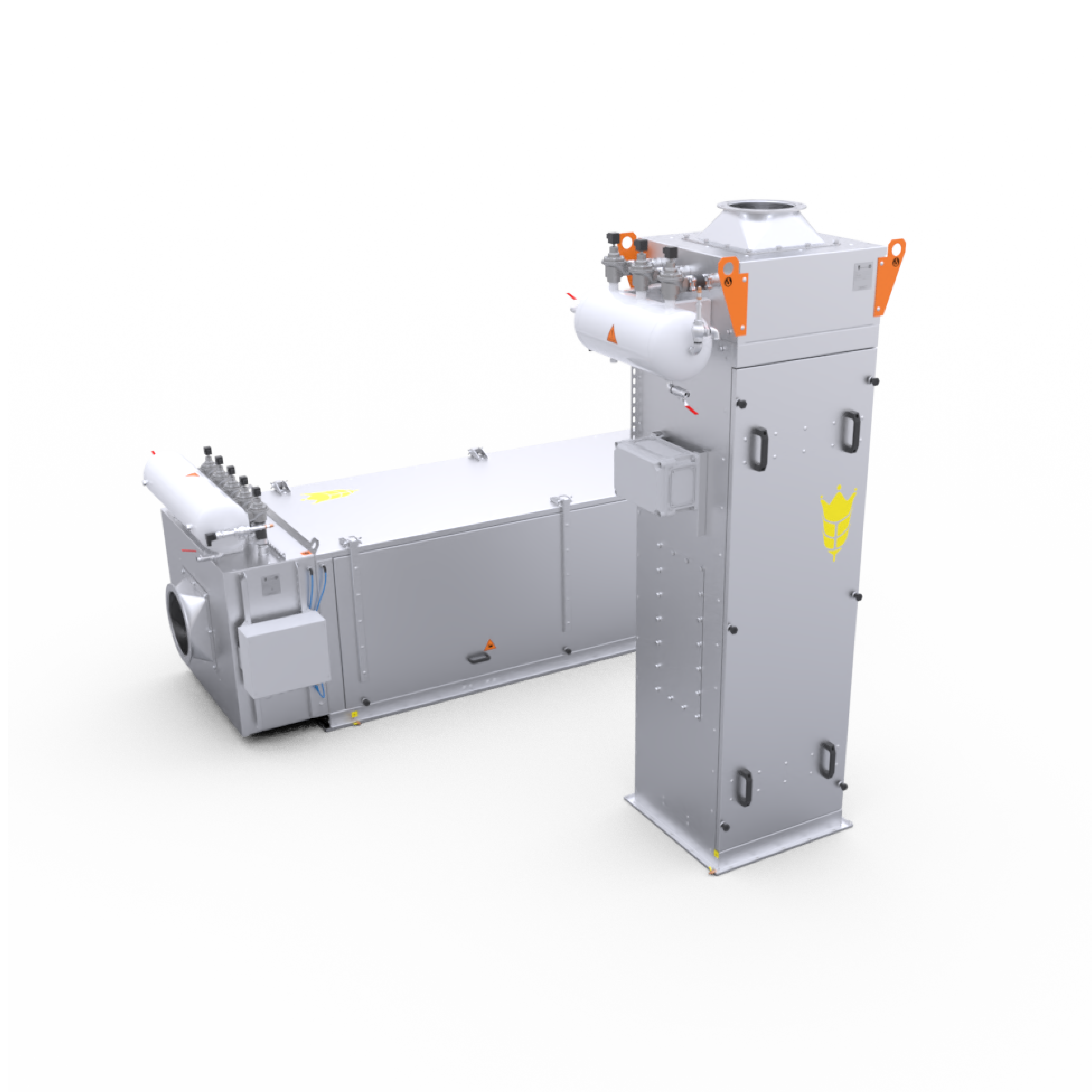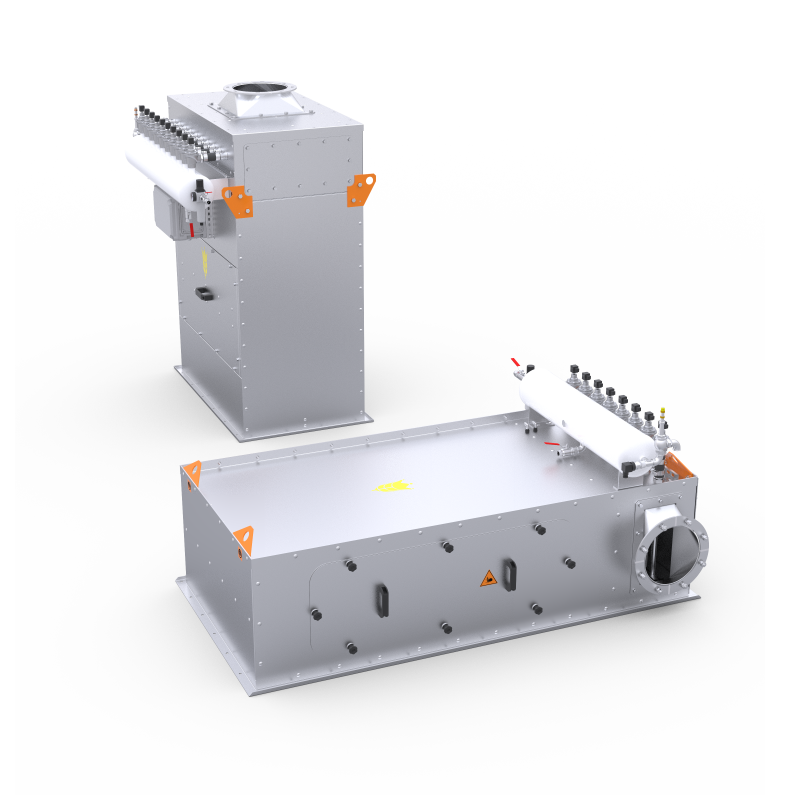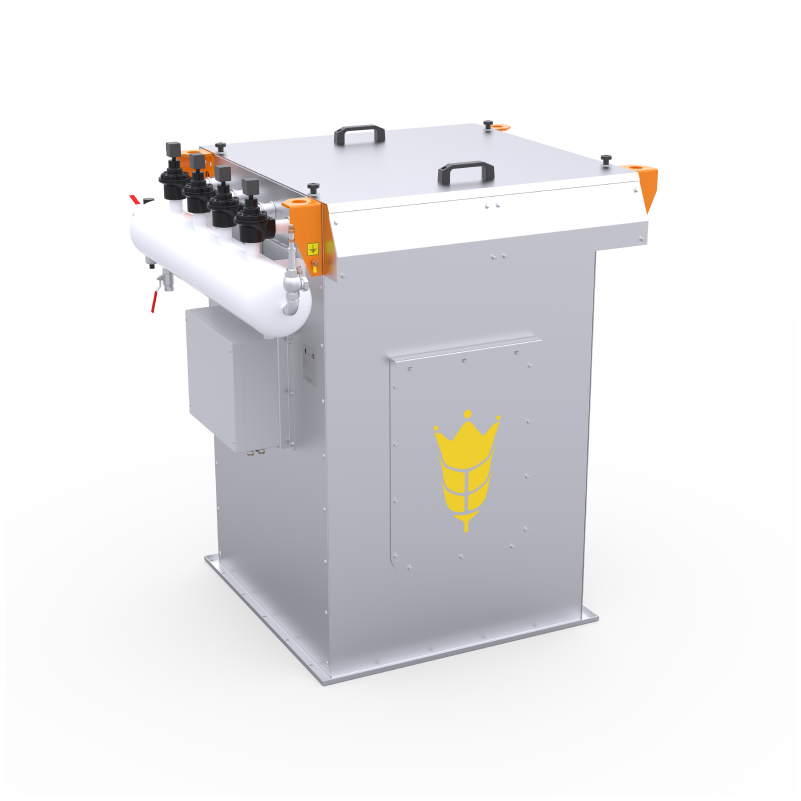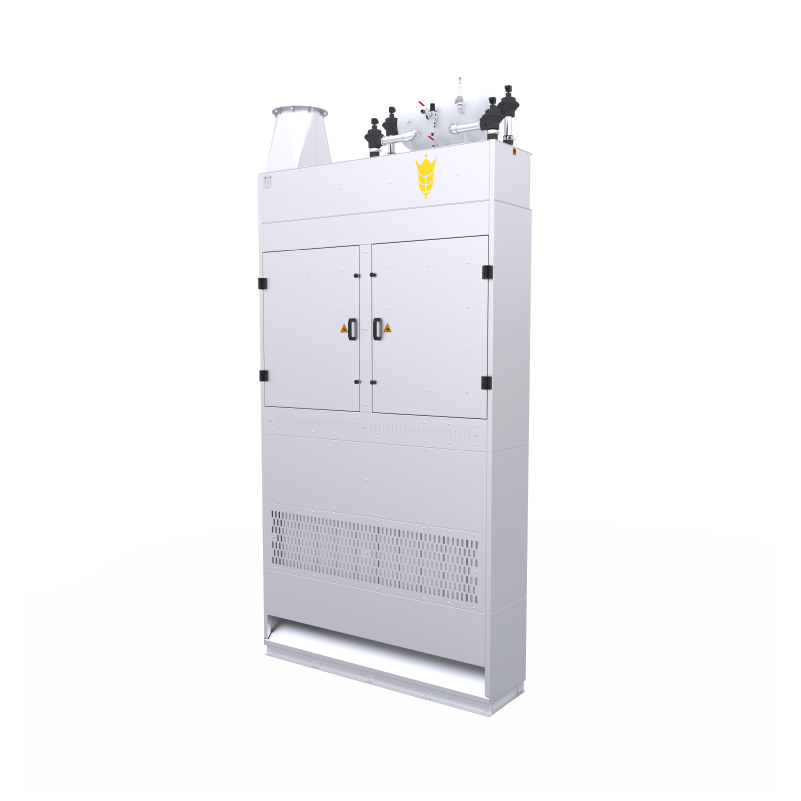Local Aspiration
When the equipment is running, dusty air is drawn into the filter's dusty air chamber. Coarse and fine dust particles are deposited on the filter elements, then the purified air enters the purified air chamber and is discharged into the atmosphere through an exhaust fan. The dust deposited on the filter elements is returned to the product through a regeneration system (self-cleaning).

When the equipment is running, dusty air is drawn into the filter's dusty air chamber. Coarse and fine dust particles are deposited on the filter elements, then the purified air enters the purified air chamber and is discharged into the atmosphere through an exhaust fan. The dust deposited on the filter elements is returned to the product through a regeneration system.

Overpressured dusty air flows from the storage tank or hopper scales to the filter in the dusty air chamber, where the dust settles on the filter elements. Then the purified air flows into the purified air chamber and is discharged into the atmosphere. Finally, the dust accumulated on the filter elements is returned to the technological flow (self-cleaning) through a regeneration system.

The dusty air generated in the receiving hopper flows into the dusty air chamber, where the dust settles on the filter elements, and the purified air flows into the purified air chamber and is discharged into the atmosphere through an exhaust fan. The dust deposited on the filter elements is returned to the product through a regeneration system (self-cleaning).

The flap system ensures that the product can flow freely into the hopper, but prevents dust from being released. Dusty air is sucked out of the hopper through cabinet-type filters and/or a centralized aspiration network. This system reduces the amount of exhaust air required to keep dust in the hopper, significantly increasing the efficiency of aspiration systems.

Questions you may have?







